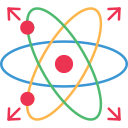This website uses cookies so that we can provide you with the best user experience possible. Cookie information is stored in your browser and performs functions such as recognising you when you return to our website and helping our team to understand which sections of the website you find most interesting and useful.
Incorporating Quantum Computing in STEM Education
Incorporating quantum computing into STEM education marks a transformative step towards preparing students for the technological challenges of the future. By integrating this cutting-edge field into curricula, educators can foster critical thinking, problem-solving abilities, and an advanced understanding of both theoretical and applied sciences. This approach not only enhances scientific literacy but also bridges the gap between traditional STEM subjects and emerging technologies, ensuring that learners develop the skills necessary for innovative research and industry demands. Exploring quantum computing in education equips students with unique insights into the quantum world, reinforcing the importance of interdisciplinary learning in a rapidly evolving scientific landscape.
The Importance of Quantum Computing in Modern STEM Education
Designing Age-Appropriate Quantum Modules
Leveraging Quantum Simulators and Software Tools
Encouraging Interdisciplinary Collaboration and Research Opportunities
Integrating Quantum Concepts Across STEM Disciplines
Providing Research-Based Learning Experiences
Building Collaborations with Industry and Academia


